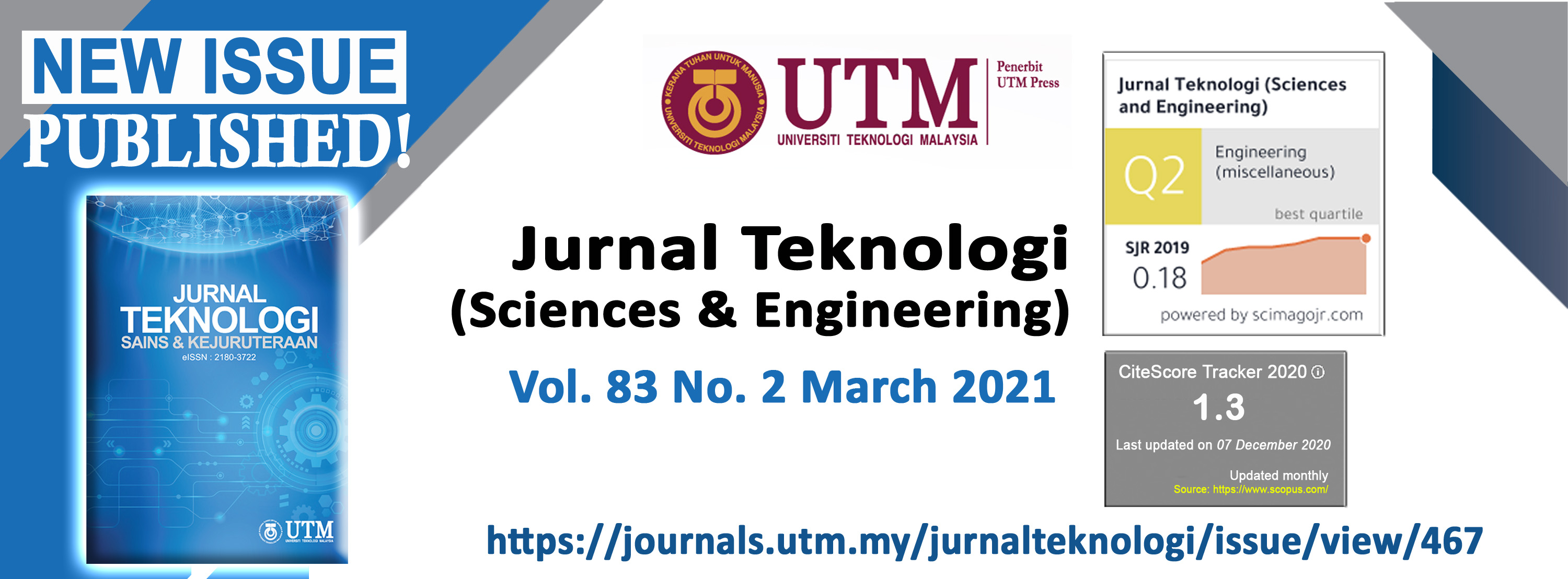STATISTICAL ANALYSIS OF THE HIGH POTENTIAL INCIDENT IN ANDALS OIL OF INDONESIA
DOI:
https://doi.org/10.11113/jurnalteknologi.v83.14884Keywords:
High potential incident, incident causes analysis, path analysis, process safety management, regression analysisAbstract
The oil and gas industry involves latent risks which are considered as one of the most severe consequences. This circumstance mainly due to the existence of intrinsic hazards involved. As part of process safety management, past incidents analysis should be performed to eliminate the potential of significant accident occurrence. It is crucial to identify the root cause of the incidents. This research discloses the degree of importance of causal factors in contributing to an incident. The methodology based on regression analysis and path analysis is performed to identify the degree of importance of incident causes. A case study is performed at Andals Oil of Indonesia to demonstrate the most significant factor leading to an incident. As the baseline for this research, incident data are gathered from Andals Oil's database during 2006 – 2018. The statistics describe the most frequent type of incident that occurs during the oil and gas field operations. Three major root causes in the oil and gas industry are evaluated: 1. Organizational system factor; 2. Job factor leading to unsafe working conditions; 3. Human-behavioral factor. Based on the regression analysis and path analysis, it is concluded that the number of High potential incidents is directly affected by Job factor leading to unsafe condition and Human-behavioral factor. Although the Organizational system factor may not significantly affect the number of High potential incidents, this factor still directly engenders unsafe working condition by affecting variable Job factors.
References
J. E. Skogdalen and J. E. Vinnem, “Combining precursor incidents investigations and QRA in oil and gas industry,†Reliab. Eng. Syst. Saf., vol. 101, pp. 48–58, 2012.
D. K. H. Tang, F. Leiliabadi, E. U. Olugu, and S. Z. binti Md Dawal, “Factors affecting safety of processes in the Malaysian oil and gas industry,†Saf. Sci., vol. 92, pp. 44–52, 2017.
Ø. Dahl and E. Olsen, “Safety compliance on offshore platforms : A multi-sample survey on the role of perceived leadership involvement and work climate,†Saf. Sci., vol. 54, pp. 17–26, 2013.
F. D. Wicaksono, “Implementation of Analytic Hierarchy Process for Determination of Incident Causes in Oil and Gas Industry,†in Proceesing, Indonesian Petroleum Association, Forty-First Annual Convention & Exhibition, May 2017, 2017, no. May.
S. Z. Halim, S. Janardanan, T. Flechas, and M. S. Mannan, “In search of Cause behind Offshore Incidents: Fire in Offshore Oil and Gas Facilities,†J. Loss Prev. Process Ind., vol. 54, no. April, pp. 254–265, 2018.
U.S. Chemical Safety and Hazard Investigation Board, “Final Investigation Report: Chevron Richmond Refinery Pipe Rupture and Fire,†Washington DC, 2015.
M. S. Mannan et al., “The legacy of Bhopal: The impact over the last 20 years and future direction,†J. Loss Prev. Process Ind., vol. 18, no. 4–6, pp. 218–224, 2005.
M. Christou and M. Konstantinidou, “Safety of offshore oil and gas operations : Lessons from past accident analysis,†2012.
I. Sutton, Process Risk and Reliability Management, Second Edi. Oxford: Elsevier Inc., 2015.
T. S. Abdelhamid and J. G. Everett, “Identifying Root Causes of Construction Accidents,†Jounal Constr. Eng. Manag., pp. 52–80, 2000.
OGP Report No. 444, “Health & safety incident reporting system users’ guide, 2010 data,†2011.
American Petroleum Institute (API), Recommended Practice for Design and Hazards Analysis for Offshore Production Facilities, no. May. Ubited States of America, 2001, pp. 1–75.
American Petroleum Institute, Process Safety Performance Indicators for the Refining & Petrochemical Industries. United States of America, 2016, pp. 1–32.
IOGP Report 2016su, “Safety Data Reporting User’s Guide – Scope and Definitions (2016 data),†London, 2017.
A. M. Herman and C. N. Jeffress, Process Safety Management. Washington DC, United States of America: U.S. Department of Labor, Occupational Safety and Health Administration, 2000, pp. 1–53.
K. Alkhaledi, S. Alrushaid, J. Almansouri, and A. Alrashed, “Using fault tree analysis in the Al-Ahmadi town gas leak incidents,†Saf. Sci., vol. 79, pp. 184–192, 2015.
P. Di Lena and L. Margara, “Optimal global alignment of signals by maximization of Pearson correlation,†Inf. Process. Lett., vol. 110, no. 16, pp. 679–686, 2010.
Kadir, Statistika Terapan: Konsep, Contoh dan Analisis Data dengan Program SPSS/Lisrel dalam Penelitian, Depok, Indonesia: Rajawali Press, 2018
Downloads
Published
Issue
Section
License
Copyright of articles that appear in Jurnal Teknologi belongs exclusively to Penerbit Universiti Teknologi Malaysia (Penerbit UTM Press). This copyright covers the rights to reproduce the article, including reprints, electronic reproductions, or any other reproductions of similar nature.
















